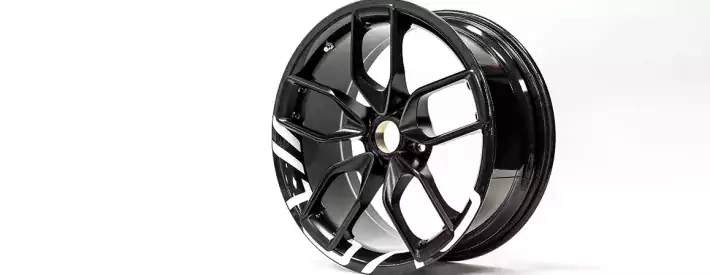(Wheel) size matters

In this article: IMI member Hayley Pells ponders if we’ve reached the limit for rim size
I must admit, when Audi design boss Marc Lichte announced that the marque had gone as far as it could with rim diameter, I breathed a huge sigh of relief. Not only are these oversized rims a pain within the workshop, they are a pain to live with too.
How many times have we heard the request “I want it to handle like a go-kart”, as an alignment and set up specialist, but go-karts have a significant design detail that assist them with their exciting handling. Teeny, tiny wheels. But suggesting smaller rims to many clients is a simple, no-go area. I might as well suggest that they take a Fiat Panda to Nürburgring.
Take the Hillman Imp for example, the Imp scooted around on 10” rims, handling like, well, a go-kart. And the original Mini managed with small wheels too, not hindering its longevity.
Big is beautiful
But the new Mini, as with all the hatches, has seen its rim size grow with client demand. A popular first upgrade has always been the Kenwood stereo, swiftly followed by a big set of wheels, bought on the internet with the tyres fitted.
For a digital native, the visualisation has had a greater impact on how a car is presented than ever before. Style over substance became king and we quickly learned to turn requests for “stance” away at the point of initial enquiry. How I held my head in my hands, why would anyone wish to make a machine go slower?
The negative effects of large rims seem to now change minds for motorists. Large rims with their big arches take up space that could be devoted to passengers, they are expensive, both to repair, replace and cover with rubber. The added disadvantage of a low-profile tyre is that you feel every pothole, and with our roads that’s a lot of feeling.
The premium look
Top end manufacturers such as Maserati have overcome this issue by clever suspension, enabling a comfortable, yet blingy ride. Other manufacturers have taken the more obvious choice of reducing unsprung weight and increasing motorist comfort by making the wheels smaller and fitting larger tyres, yet coupled with the plat de jour of an SUV body shape, even I think they look slightly funny on seemingly skateboard-sized wheels.
The main advantage of a large set of rims to the aesthetics of the vehicle is that look of readiness, the suggestion of movement while standing still. Selling the car before the motorist has even sat in it. The lack of capability of the large rim with the resultant rough ride, unless you’re fortunate enough to have active dampers and deep pockets for when things go wrong, and kerbs seem to be magnetically attracted to anything over 19”. It’s not all bad though, the lower profile necessitated on the larger rim, does give for sharper steering and a sporty feeling.
Even motorsport’s getting in on the act
I have previously always referenced F1 and their 13” wheels to help support my performance value argument of the smaller wheel, but even F1 wants to introduce 18” wheels. Arguments about the effect these rims will have on suspension and aerodynamics have been cited to retain the current rim size, but the main argument for the increased is that they will have more in common with road cars and therefore they are better for marketing purposes. Scientific and engineering reality count for nothing where marketing’s concerned.
So what have we learned? Physics tells us that a smaller wheel will give a higher effective gear ratio for the powertrain, improving acceleration but decreasing top speed. Larger wheels bring the headache of unsprung weight and the greater moment of inertia but can roll over small things better such as minor road imperfections, sticks and gravel. What do I want? The same thing as every motorist, and Goldilocks, and be just right; the perfect balance between looks and performance. Can the car manufacturers give us the fairytale?




